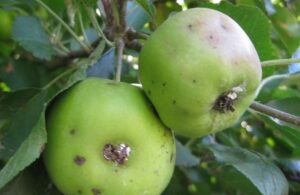Radko Tichavsky is a Czech born Mexican Agrohomeopath. He is a co-founder and director of Instituto Comenius in Mexico and author of Handbook of Agrohomeopathy, 2007 (Spanish) and Homeopathy for Plants, 2009 (Spanish) and creator and teacher of Holohomeopathy.
Agrohomeopathy Course!
Radko Tichavskyi is now offering a one semester virtual course in Agrohomeopathy (in English). You can learn how to define and analyze holons and how to repertorize the specific homeopathic treatment beyond just disease or pest names. You can find out more here: www.icomenius.edu.mx
A Materia Medica and Repertory for Plants: Mark Moodie hosts the website “Considera”, which provides a growing M.M and Repertory for plants and discusses resources for biodynamics and Agrohomeopathy .The website allows the world community to contribute their experiences in planting.
Hello Mr. Tichavsky,
Our three acre crop of cucumbers and pumpkins was destroyed this year by Cucumber Beetles. We live in East Orange New Jersey (US), Zip code: 07016. We have hot summers and cold winters. Rainfall is moderate. We did not use any chemicals this year. What can we do to prevent this next summer?
Thank you
Leonard Fisher
Radko Tichavsky:
Dear Leonard,
Cucumber beatles can be controled by Larrea tridentata 12 CH sprayed with a little vegetable oil as coadyuvant. We used to apply approximately 20 liters of homeopathic remedy per acre. The attacks of Cucumber beatles can be caused by excess of nutrition based on animal excrement or excess of nitrogen in general, which causes deficiency of calcium, phosphorus, iron and copper. You can apply as preventive: Calcarea carbonica 6 CH, Ferrum phosphoricum 6 CH and Cuprum metallicum 6 CH.
It is also very advisable to alternate the cultures with chard, corn, beans, cabbage, onion and beet. Ie., don’t plant the same crops in the same place consecutively. It is also useful to intercalate aromatic plants such as rosemary, basil, rue, pelargonium citronella between plants of cucumbers and pumpkins.
Dear Radko Tichavsky,
I really enjoy your column. I finally get to ask you a question. Sawflies (Caliroa cerasi), have attacked our Cherry Trees the last two years, defoliating the trees. Our farm is located in Brentwood, Tenessee (US) and the zipcode is 37024. The temperature ranges from 36°F (2°C) in January to 79°F (26°C) in July. Annual rainfall is about 53 inches. We don’t want to use chemicals, so I’m hoping you have a gentler way to solve this.
Thank you
Howard
Radko Tichavsky:
Dear Howard:
Caliroa cerasi can be controlled by multiple mechanisms: mechanically by applying kaolin or diatomea powder on the larvae and leaves on the tree. Also, it can help to plant Ruta graveolens below the trees. To treat the pupae in the soil, apply Ricinus communis 6 CH during the autumn with sap of Opuntia ficus-indica as an coadyuvant. 1000 liters of the homeopathic remedy per hectare is applied finely sprayed on the soil, once a month. Before the attack of the larvae is in progress, Ocymum basillicum 12 CH and Myristica fragans 12 CH are applied. Once the attack of the larvae is in progress (usually two generations a year) you apply Pimenta dioica 12 CH alternated with Melia azedarach 12 with sugar cane sap as adjuvant.
Greetings Mr. Tichavsky,
My husband and I attempted to grow strawberries on our lawn this summer, but we ended up with gray mold on the strawberries. We had a lot of rainfall this summer and the fruit mostly rotted. Fungicides were recommended but we didn’t want to use chemicals. We live in Georgetown, Florida (U.S.) We get about 60 inches of rain a year, sometimes more (zipcode : 32139). We have a 6 foot high fence around the lawn, which tends to block the wind.
Thank you
Dorothy Perkins
Radko Tichavsky:
Dear Dorothy,
Strawberries originally coexisted in their natural habitat with pines. To control the fungus you can place mulching of pine leaves on the ground of the strawberries. As a preventive, you can use Calcarea phosphorica 6 CH or Carbo vegetabilis 6 CH. It’s very important is not to overuse fertilizers with nitrogen content. As remedies in this symptomatology, you can use the following homeopathic remedies: Vanilla mexicana 12 CH alternated with Selenium 6 CH with Thymus spp. as an adjuvant. Spray twice a week in the afternoon, out of reach of the sun until gray mold disappears. If you can find Phellinus pini 12 CH, this really is the principal master remedy for fungal diseases in strawberries.
Dear Radko Tichavsky
What can I do about crickets in the garden? They are making holes in the grass and keeping us awake at night. We are in Nelspruit, South Africa. The grass is also being eaten by termites. We are in a sub tropical location with temperatures around 25- 35 degrees C.
Dr. Anthony de Pontes( M.Tech Hom) Registered Homoeopath
Radko Tichavsky:
Dear Dr. de Pontes,
For control of crickets you can use Tarentula cubensis 12 CH, Loxosceles laeta 6 CH and Lactrodectus mactans 6 CH or Agriope 12 CH with sugarcane sap as adjuvant. For a biological control you can use ducks. I mean live ducks, as they are incredibly effective with insects in general and do not harm plants. As far as the termites are concerned, these are generally a symptomatology developed by the holon as a consequence of the deforestation or conversion of forests to pastures. Its function is mainly to restore the soil and return it to the state of balanced vitality. The most friendly solution is to reforest the area, which makes the termites disappear or keeps them at a minimal expression.
Personally I have a tremendous respect towards the termites. In my last trip to Colombia, I was teaching a course of holohomeopathy in a remote area in the jungle, and I was infected by Chikunguya virus. Without help but with nature around ,I listened to a tip from the Indians of the area to take a bath in a kind of tea made from termite home, heated in the fire. I had taken two baths and in two days all the symptoms of the Chikunguya disappeared: the temperature, body aches and eruptions. So, every time I see a termite home, I humbly bow to the enormous wisdom and power of nature.
Dear Sir,
I am growing Chillies on the balcony of my flat. The seedlings were replanted and kept 4 each in two balconies. Both places have everything in common though separated by 20 ft. space. Chillies in one balcony are now diseased with leaf curl disease but chillies are healthy in another balcony.
Thank you
Radko Tichavsky:
Dear Shovon,
Pests like aphids, thrips, mites and whiteflies generally transmit viral leaf curl onto pepper plants. Here the difference between the plants of the two different balconies may be due to several factors. For example, different seeds and plant biotypology, where for example the sulphuric biotype is very resistant to insects, but the phosphoric biotype (characteristic of its body is a curve in the form of the letter C) attracts pests due to small differences in the photosynthetic capacity and slightly more yellowing of the leaves. These small differences that are not perceptible to the human eye can generally increase the traffic of insects and cause a greater probability of virus transmission. In plants with leaf curl you can apply Salix babylonica 6 CH, sprayed in the afternoon and out of reach of strong sun and apply a little of vitamin C in irrigation.





Thank you for this Marvelous Column. I learn so much from the depth of Mr. Tichavsky’s answers.